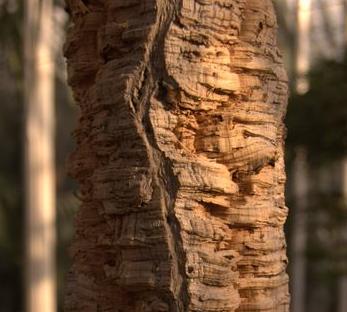Source Of Cork
Have you ever wondered about the source of cork? While there are several varieties of cork trees, the cork oak supplies the majority of the supply of cork. Surprisingly, most species of trees have a layer of cork between the rough outer bark and the tender inner bark, but the layer is too thin to harvest.
Cork Producing Countries Encircle The Mediterranean
The cork oak grows primarily in countries surrounding the Mediterranean Sea; Italy, France, Tunisia, Morocco, Portugal, Spain and Algeria. About 50 percent of the world’s supply of cork is produced in Portugal. The cork oak’s thick layer of bark may be a result of the tree evolving to protect itself against the dry climate, large temperature changes and forest fires. The thick layer of cork serves as insulation against these hazards. While many species of trees die from fire, the cork oak usually survives and quickly rejuvenates itself.
Cork Oak Trees Can Live 250 Years
The lifespan of a cork oak is 150 to 250 years. The first harvest of cork bark occurs at about 25 years of age. Succeeding harvests can be made every 9 to 12 years. The bark is removed from the tree with hatchets. If the tender inner bark is damaged, it will not produce a new layer of bark, so extra care is exercised in the bark removal. The harvesting is done entirely by hand.
Cork Has Waterproof And Fire-Resistant Qualities
The pieces of cork are then boiled, and the outer bark is separated from the cork. The corks for bottles are punched from the large pieces of cork. The remnants of cork are used to manufacture cork for bulletin boards and floor tile. Cork is waterproof and remarkably fire-resistant, due to a natural substance called suberin.
Bottle Corks Have Been Around For 400 Years
The use of cork bottle stoppers has a history of 400 years. After punching the corks, 85 percent of the cork is left. Bottle corks represent 66 percent of the value of cork sales. The current trend is to substitute other materials, such as metal and plastic for bottle stoppers. Large-scale substitution would devastate the cork industry. Environmental groups fear that lower demand for cork would result in neglect of the cork forests, which are now exceptionally well maintained as a national treasure. Cork forests are home to many endangered species of animals, birds and rare plants. In Portugal, government approval is required to cut down a cork oak. The cork industry will probably be in existence for a long time, but it may lose its predominance of the bottle cork market. That is the price of progress.
Austin, Texas has been Peter Wendt’s writing headquarters for a number of years now. For readers who wish to learn more about this subject, he recommends they check out tree site

